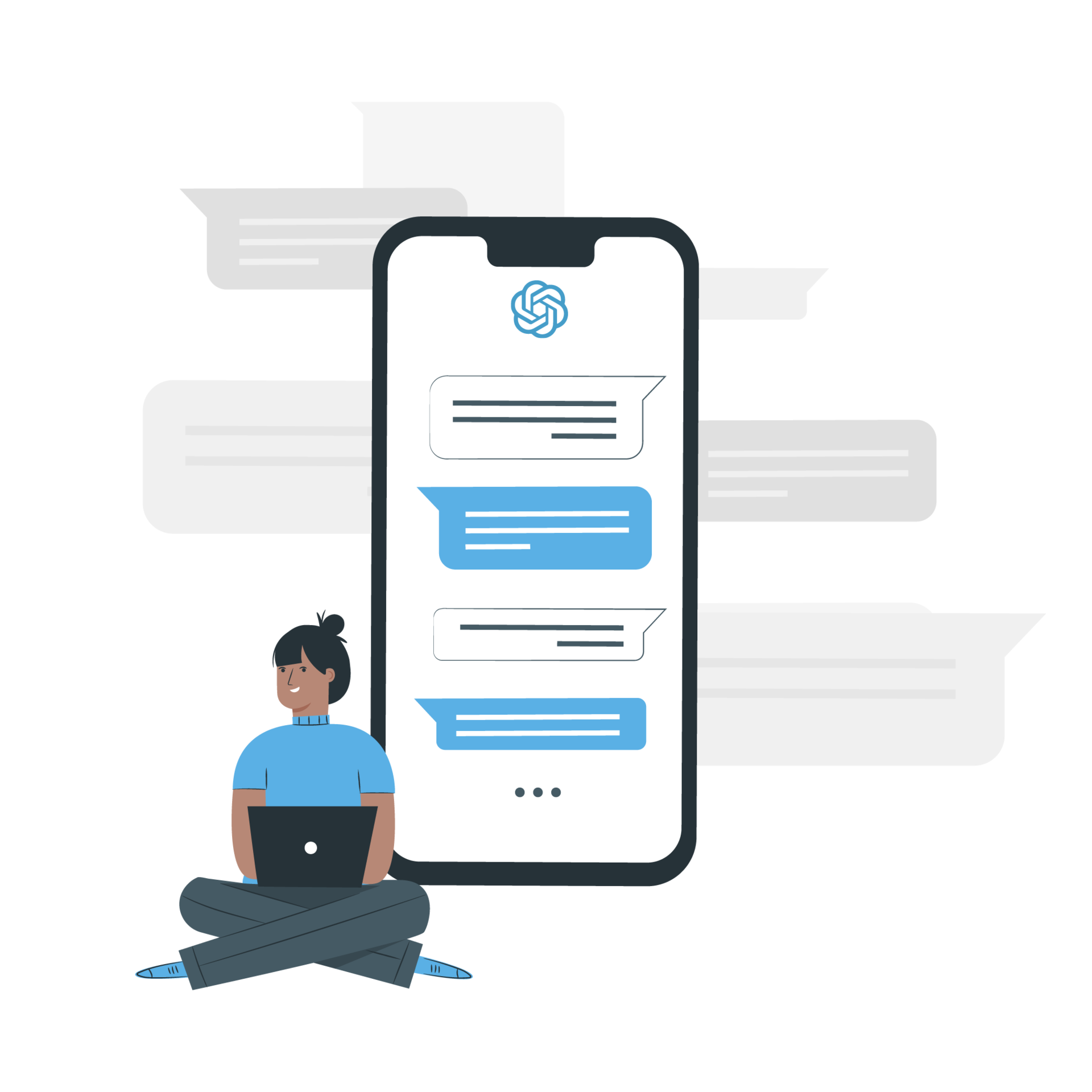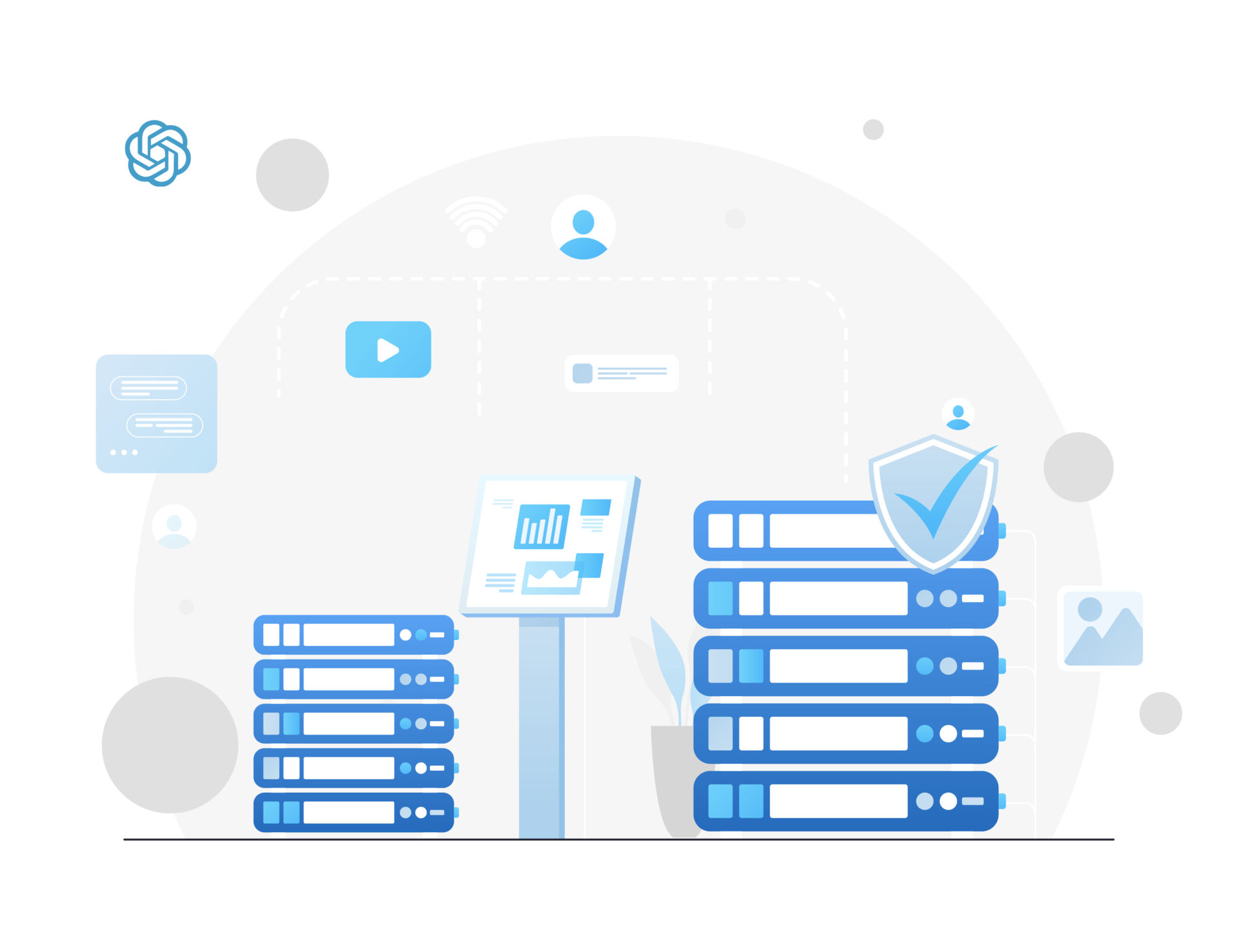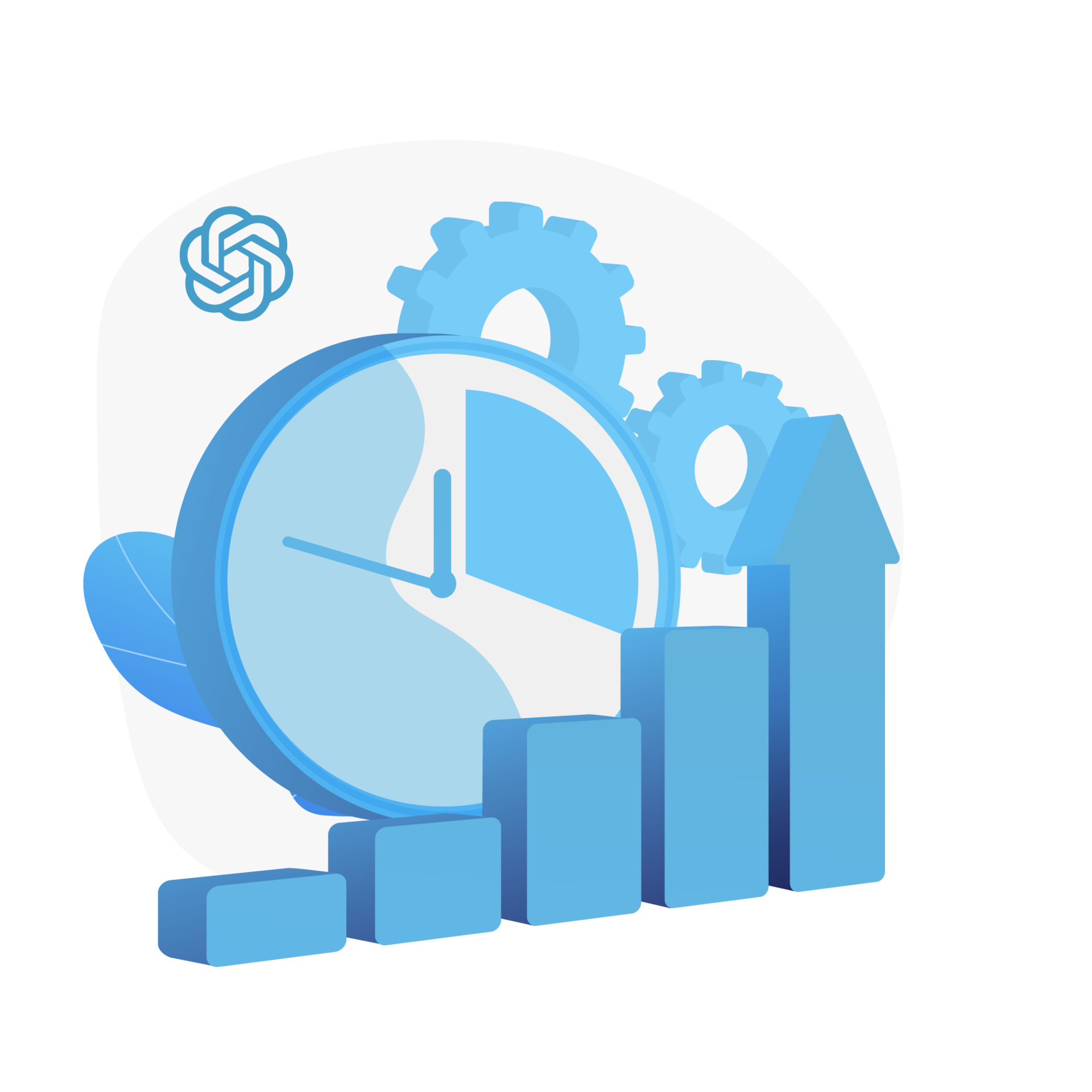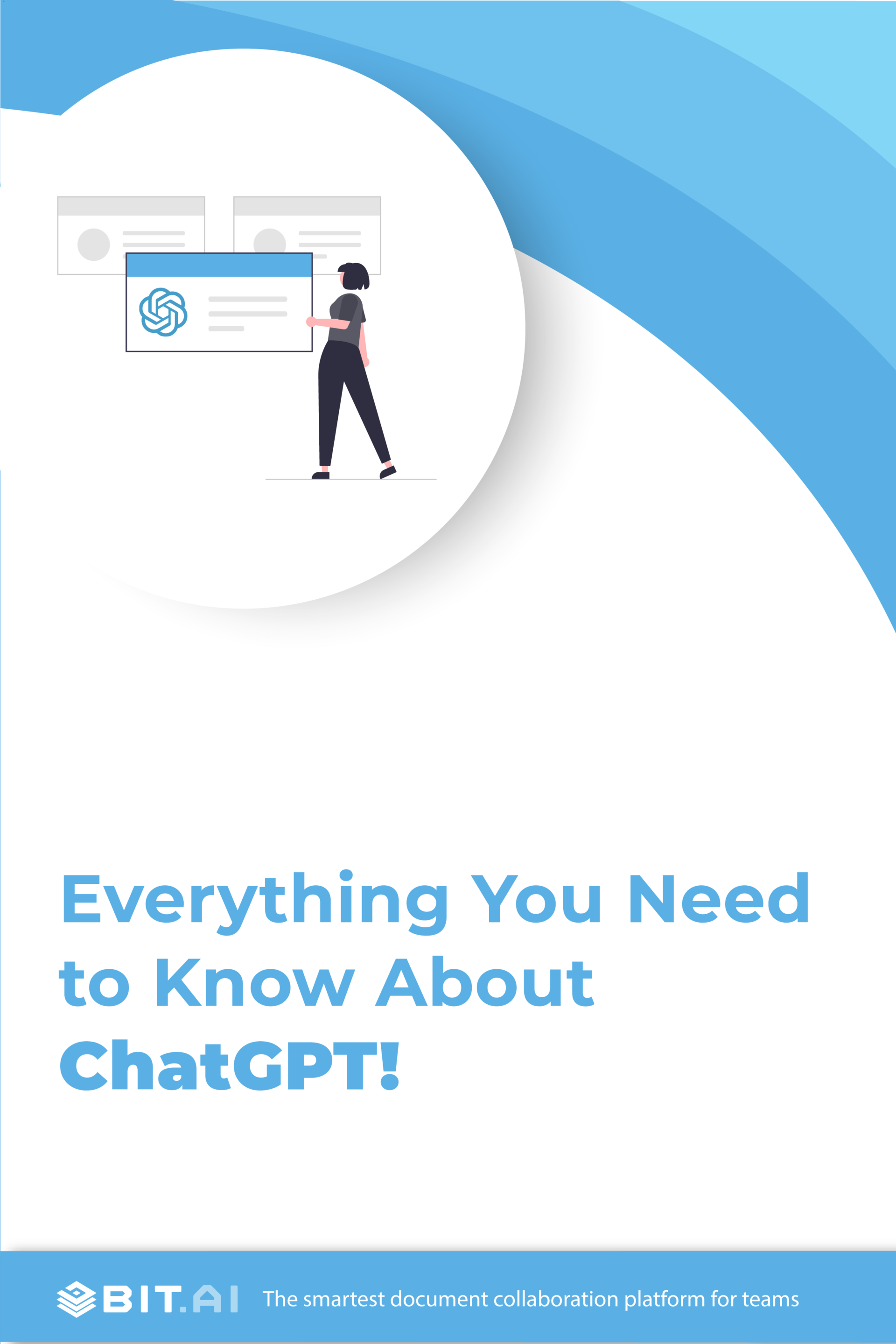What if we told you that you can now instruct a chatbot to create content for you, and it does so in the most human-like way possible? Hard to believe?
Well, it’s time to suspend your disbelief because it is possible. And nope, this is not a plot for a sci-fi movie. We’re talking about the latest development by OpenAI – ChatGPT.
Now if you haven’t been living under a rock, then you would know that ChatGPT is taking the world by storm with its ability to generate human-like text. It’s almost like the future is here.
You open social media, and it is the talk of the town. It gets you wondering – what is with all the hype around this technology? Is it real? How does it work? Is it a good thing? And the questions are endless.
But worry not, folks! In this blog, we want to help you understand the razzmatazz behind ChatGPT, its origins, functioning, limitations, and more.
So if you want to learn a thing or two about the new wave of AI, quit waiting around and jump right in!
First Off, What Exactly is ChatGPT, and Who Made It?
ChatGPT is a natural language processing tool developed by OpenAI. It is driven by AI technology designed to understand and respond to human instructions in a conversational style.
It is an AI-based chatbot system that allows you to have human-like conversations. It is trained on a huge amount of text data and can conversationally produce text.
It helps answer questions, narrate stories, create content, translate languages, explain scientific concepts, compose emails, draft letters, write essays or poems, develop codes, and so much more in the most natural-sounding tone.
Simply speaking, it is designed to simulate a human conversation. So all you have to do is type in your question or instruction, and the tool will instantly offer you answers and the content you’re looking for.

ChatGPT is currently in its research and feedback-collection phase and is continuously being trained to improve its performance. Hence, it is currently open to the public free of charge.
So who created ChatGPT? It was developed by a San Francisco-based artificial intelligence and research company called OpenAI. The company is well-known for a deep-learning model and AI art generator called DALL·E that helps generate images from text instructions and an automatic speech recognition system called Whisper.
Now that you know about this new AI tool, let’s look at how it works!
How Exactly Does ChatGPT Work?
Using ChatGPT is super easy. The first step is to create an account with one of your email addresses on the chat.openai.com website; voila, you are ready to use ChatGPT.
Now all you have to do is type in a question or request, and the chatbot will generate the answers. You can give it specific instructions regarding style, format, language, etc., and it will follow it accordingly. It’s as simple as that!
A cool thing about ChatGPT is that it remembers all your previous conversations and questions and references them in the following answers. It can explain and elaborate on ideas and even apologize when it gets things wrong. It also filters its responses for inappropriate prompts by identifying and dismissing them.
Now that you know a bit about it and how it works, let’s look at why it is an amazing tool for natural language processing tasks.
What Makes ChatGPT So Good?
1. Large Corpus of Data
One of the main reasons ChatGPT is so good is because of the large corpus of data it was trained on. This corpus, which comprises various sets of text from the internet, allows the model to understand and generate a wide range of languages, idioms, and expressions. This also makes it more robust to new inputs and allows it to generate high-quality responses.

2. Human-Like Responses
What makes ChatGPT so unique is its ability to generate highly relevant responses to the instruction or prompt. It can showcase a level of knowledge and understanding that is strikingly human-like. This makes this tool especially useful for generating texts and translating languages.
3. Contextual Understanding
ChatGPT is pre-trained on a massive corpus of text data. This allows it to understand the context and meaning of the text it generates. It allows the model to understand the intent behind a sentence and generate a response appropriate for the context.
4. Fine-Tuning
Another reason ChatGPT is so good is that it can be fine-tuned for specific tasks. For example, it can be fine-tuned for a specific language or task, such as question answering or translation. This allows the model to generate accurate and articulate responses for specific tasks.
5. Efficiency
The tool allows for faster and more efficient natural language processing tasks, as it can quickly handle large amounts of data and generate responses. Additionally, it can be integrated with other systems, such as chatbots and virtual assistants, which can help automate tasks and improve the system’s overall efficiency.

In short, ChatGPT is an awesome tool that comes with various benefits. So this brings us to the next important question – how exactly can you use ChatGPT in the real world? Let’s find out in the next section!
How Can You Use ChatGPT?
As we mentioned before in the previous sections, the ChatGPT model has a multitude of functions. From answering simple questions, explaining complex scientific methods, coding, drafting emails, and even simulating philosophical questions, this tool lets you create and write pretty much anything!
If you think of it, you can use ChatGPT for several real-life scenarios. Some of the use cases that we can think of include the following:
- Using ChatGPT in the customer service department for generating responses in a chatbot or virtual assistant to offer a more engaging interaction with customers.
- Creating personalized customer experience or communication for email responses or product recommendations with the help of ChatGPT
- Utilizing ChatGPT in the translation field and translating any information or text from one language to another.
- Creating or developing content like blog posts, articles, reviews, etc., for the company websites and social media platforms.
- Brainstorming ideas on new topics, subjects, and keywords for creating new content for your company website or personal blogs.
- Asking ChatGPT to generate crisp summaries and recaps of long-form texts or long documents can be useful for students and academic scholars.
In a nutshell, ChatGPT can be useful in your personal, academic, and professional life. Everything about ChatGPT sounds great. However, it’s not without flaws. Let’s dig a little deeper into that in the next section!
Limitations of ChatGPT
Although it is a powerful AI-driven chatbot system, ChatGPT has limitations like any other software or technology. Here are a few of them:
1. Quality of Answers Relies on the Quality of Instructions
One of the main limitations of ChatGPT is that the quality of the answers you are looking for will purely depend on the quality of your instruction. So if you give better directions or instructions, you will get better answers. However, if you are not articulate enough to express your directions properly, then the answer you get will not be up to the mark.
2. Restrictions on Toxic Answers
Another problem with using ChatGPT is that it doesn’t answer all your questions. It is specifically programmed to filter out inappropriate prompts and evade toxic or harmful responses. This means that ChatGPT will avoid answering anything deemed harmful.
3. Inaccuracy and Wrong Answers
ChatGPT is not a search engine that can give you the right answers; it can only provide answers based on the data it has been trained on. This leaves a lot of room for errors and inaccuracies. Also, since it is a new technology, it has not yet undergone enough training to provide correct answers, so most of the time, the answers may be wrong.
4. Bias Issues
The thing about ChatGPT is that if the training data is biased, then it can potentially generate discriminatory and offensive results. The tool has demonstrated bias when it comes to minority groups. This can churn out biased and offensive content. So ChatGPT must improve its data transparency to reduce bias.
5. Outdated Data
ChatGPT’s most recent training data is from September 2021. And since then, many changes have happened worldwide, such as updates in programming languages, new library features, etc. ChatGPT is currently not up to date with these changes. So this means the tool operates off of an outdated data set.
In addition to these limitations, ChatGPT has also got people worried about certain things. Let’s look at this in the next section.
Why Are People Worried About ChatGPT?
With ChatGPT making lives a lot easier for many people, several others have been worried about its influence on cyber-security, academia, and human labor.
Many users and experts have expressed concern about how the new tech might replace human intelligence. For example, if ChatGPT can produce an article about any topic within a few seconds, it potentially eliminates the need for a human writer. Another example is that it makes it easier for students to write their assignments and homework, allowing them to avoid learning to write independently.
Although it does not write malware codes as it has security protocols to identify and dismiss inappropriate requests, there is a rising concern that it is possible to bypass these protocols to write malware, which can potentially construct malware on demand. This poses a threat to cyber-security as it may soon become easy for even less-experienced attackers to launch cyberattacks with the help of ChatGPT’s assistance.
Another concern with ChatGPT is the possibility of spreading misinformation. As it is not connected to the internet, it is likely to produce and share inaccurate and wrong information. Even OpenAI notes that ChatGPT often writes plausible-sounding but incorrect answers.
Conclusion
It’s safe to say that ChatGPT is a very advanced and powerful chatbot that can make people’s lives easier. After all, that’s what AI ultimately aims to do.
But does this mean AI is taking over the world as we all feared? The answer to that is that we are not quite there yet. However, human-style intelligence in AI is no longer a futuristic idea.
The AI tool may come with its limitations and concerns, but there’s no doubt that it’s showing the way toward the tech future. We hope this blog has helped you understand a little bit about ChatGPT! Adios amigos!
Further Reads:
KPI Report: What it is & How to Create a Perfect One?
15 Business Intelligence Tools & Software Every Business Needs!
KPI Dashboard: Definition, Tools, and Tips!
6 Ways Digital Transformation Can Fastrack Your Business Growth in 2023
How To Market To Gen Z The Right Way in 2023?


